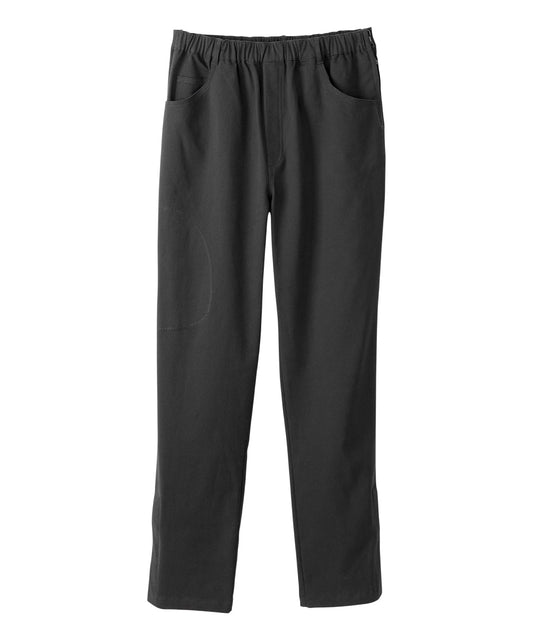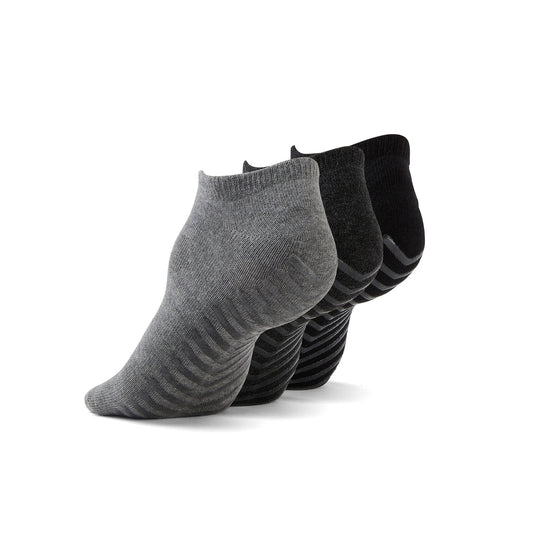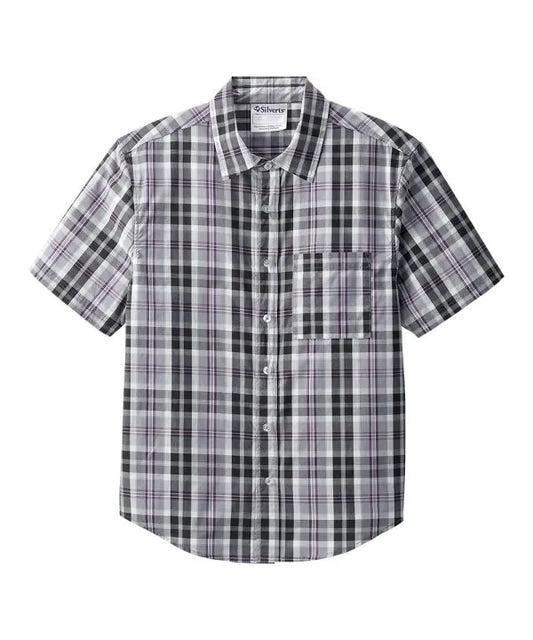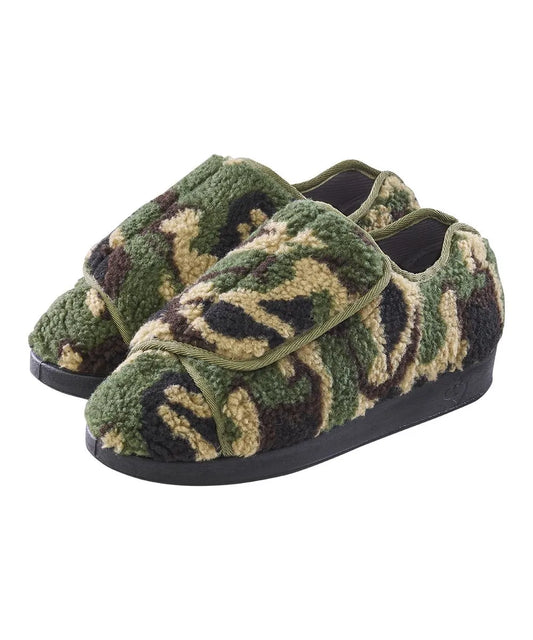Written by: Zuhair Augla
Adaptive clothing has truly transformed the fashion industry, focusing on inclusivity, functionality, and stylish design. In our fast-paced world, where independence and self-expression hold great importance, adaptive clothing has become a thoughtful solution for individuals who may encounter challenges with traditional apparel. Throughout this blog, you'll discover the many dimensions of adaptive clothing designed for everyday life. We’ll explore everything from casual wear to innovative prototype examples in adaptive design, and help you understand which garments might best suit specific needs. Additionally, we’ll share key considerations to keep in mind when selecting adaptive apparel that works for you.
Why Choose Adaptive Clothing for Everyday Wear?
Adaptive clothing is designed with you in mind, focusing on ease, comfort, and style while meeting special needs. Whether you face physical challenges, manage chronic conditions, or just enjoy a simpler way to dress, adaptive clothing offers the functionality that typical outfits might not provide. What really draws people in is how it empowers them to be independent in their daily lives, whether getting ready for work, relaxing at home, or dressing up for a special occasion.
Everyday wear should be about confidence and comfort, and adaptive clothing delivers on both fronts. These clothes are thoughtfully designed with features to make dressing less of a chore. Many are designed to include creative solutions that allow magnetic closures, strategically placed openings, or elasticized fabrics, thus minimizing the need for complicated fastenings like buttons and zippers. Such thoughtful design simplifies the process of getting dressed. It minimizes the physical strain that can come with managing standard clothing. The resulting ease of use can lead to increased self-confidence and an improved overall quality of life.
Moreover, adaptive clothes have been designed with many people in mind. In addition to the visibly disabled, this covers everyone who is suffering from some sort of temporary injury, chronic pain, or age-related issues with mobility. As times keep changing and moving toward personalization and inclusiveness, adaptive clothes will remain ahead in providing pragmatic solutions without giving up on modern style. These garments are designed with the latest fashion so wearers do not have to choose between functionality and good looks. On the contrary, they can espouse fashion that adapts to their life to make everyday tasks less burdensome and enjoyable.
What Are Examples of Adaptive Clothing?
Adaptive clothing is available for many issues, crafted to address particular problems and enhance overall wear. The diversity in needs has brought out various styles and designs to attempt to meet the different needs of the users. Most of these adaptive tops and shirts are designed explicitly with either a side opening or hidden fasteners, ensuring easier dressing for people with confined arm mobility. Magnetic or Velcro closures without fine motor control to button up or zip the garments are especially employed in this category.
Other common examples are adaptive pants, which have adjustable waistbands and side openings to accommodate assistive devices such as braces or prosthetics. Design considerations go beyond the garment's structure; fabrics are chosen not only for comfort but also for ease of care and durability. Adaptive garments often use soft, breathable fabrics that minimize irritation and maximize mobility, making the wearer feel as great as they look.
But the adaptive design element trickles down into outerwear, too. Jackets and coats can be designed with features like extra-wide openings or magnetic closures that make removing or putting on the garment easier when someone has limited dexterity. This Women’s Reversible Front Vest with Magnetic Closure is a great choice for outwear made adaptive as it has a magnetic closure and it can be found on the June Adaptive website.
Women's Reversible Front Vest with Magnetic Closure
Adaptive footwear has truly come a long way with easy-fastening systems like elastic laces and adjustable straps. These thoughtful innovations help reduce the need to bend over or wrestle with traditional shoelaces, making a wonderful impact on users' daily lives. They really foster a sense of independence and comfort that is so important!
Even intimate apparel has not been left behind in the evolving adaptive clothing. Underwear and sleepwear have been redesigned to provide easy access and a good fit. The idea is to ensure that every piece of one's outfit, from outerwear to undergarments, caters to the particular needs facing them. This holistic approach underlines the belief that all individuals are entitled to clothes that reflect their personal style while serving their practical needs.
This Men's Knit Pajama Set With Back Overlap Top & Pull-on Pants which can be found on JuneAdaptive.com is terrific for individuals with limited upper-body mobility and seated dressing.
Men's Knit Pajama Set With Back Overlap Top & Pull-on Pants
Meanwhile, the adaptive clothing industry is highly innovative. In addition to the physical aspects of clothes design, it develops psychological and emotional feelings one gets when constrained by conventional attire. Barriers crumble with every new design, and dressing well acquires a new meaning. Great emphasis on seamless integration with modern aesthetics to ensure functionality keeps this a dynamic, ever-changing field where the wearer's comfort and self-expression are considered.
What does a person with a disability wear?
Clothing plays a great role in daily life. Adaptive clothes, designed for people with disabilities, are focused on their independence and the reduction of physical challenges developed by standard garments. Such clothes are mainly provided by companies specializing in adaptive designs that offer a line of products that combine functional practicality with contemporary style.
A common feature of adaptive garments designed for persons with disabilities is ease of use. Indeed, many types of adaptive garments feature magnetic closures instead of buttons, which help wearers who have limited use of their hands dress quickly and independently. The design element also simplifies this dressing process and gives an invaluable sense of independence in a daily routine. More recently, clothes designs allow adjustments for changed body shapes or the addition of medical apparatus to enable evolution in garments along with the need of the wearer, rather than having the wearer adapt themselves according to a fixated design of garments.
Besides closure methods, many clothes have adapted designs and modifications that accommodate many physical barriers. Some tops and dresses have been designed with higher necklines or longer sleeves for easier use of medical devices and comfort concerns associated with sensitive skin. Likewise, adaptive pants, more often than not, boast elastic waistbands engineered to expand and move with the body, significantly reducing discomfort while granting freedom of movement. And all these little considerations amount to not only convenience but, quite importantly, dignity and empowerment. The ability of a person to dress with minor assistance empowers him. It cements his belief in being autonomous in every walk of life.
The options open to persons with disabilities are endless and diverse as the needs may be. Some people may require wheelchair assistance; others may not see well enough or suffer constant pain. Companies have been brainstorming to find adaptive clothing for these different challenges. Attention is paid to creating garments that do not draw unwanted attention to the disability but provide a discreet and elegant solution to the challenges of dressing. This philosophy of discretion in support enables the clothes to fit into everyday life, thus allowing the continuation of life with the least interruption and maximum comfort.
It is also very important to consider that adaptive clothing designed for people with disabilities is specially made for them, as all their needs could differ. Designers sometimes consider working with occupational therapists and caregivers, as well as the wearers, to ensure a final product is functional and fashionable. The process between designers, suppliers, and even the eventual client has gone as far as ensuring that these special garments were initially for addressing a given physical limitation and the person's fashion out there. Further, by going beyond function need, it was meant to portray diversity in supporting people wearing clothes worthy of their lifestyle.
What to Look for in Adaptive Garments?
In adaptive garments, the focus should be on features that will make them easy to use, comfortable, and flattering while still being very modern. Quality adaptive clothing is designed to make getting dressed as simple and stress-free as possible. One of the most important aspects is the type of closures used in the garment. For example, magnetic closures instead of buttons or zippers promote little dexterity and effort needed to close; thus, a secure fit is achieved non-complexly on the wearer. This minor telling detail can definitely change the way of dressing, turning what probably would have become a strenuous process into one almost effortless.
Of course, selecting the fabric that will be applied in adaptive wear is also imperative. Comforting and being able to breathe with the wearer in soft materials only helps minimize, rather than accentuate, chafing issues for those sensitive-skinned those who are forced to use them for truly extended intervals of time. Therefore, designers must take special regard to ensure that every garment has adaptive features, too, which consider the resilient fabric's gentle and skin-friendly attributes. The type of fabric used further helps contribute to the overall look of a garment, meaning adaptive clothing does not have to be less fashionable.
Another important feature found in good-quality adaptive clothing is adjustability. Clothing items that offer customizable fits- those with elastic waistbands, adjustable straps, or flexible seams- allow wearers to adjust them to their ever-changing body needs. This is even more vital for people whose body shapes may change over time due to medical treatments or any changes in mobility. The design of such clothes shows an understanding of the fluidity of the human body. It gives a sense of security, accommodating different sizes and shapes over time. Adaptive clothing, embracing adjustability, will ensure that every wearer experiences comfort and confidence, regardless of their physical condition.
Besides these practical features, aesthetics also play an important role in the success of adaptive clothing. The design of modern adaptive garments is very aware of current trends, and functionality doesn't have to mean sacrificing style. Designers try to make the pieces contemporary and appealing so wearers can feel fashionable and confident. This alone ensures that adaptive clothing does not fall into a niche category but stands on par with mainstream fashion in terms of aesthetics and innovation.
Conclusion
Adaptive clothing for everyday living is much more functional than needed empowerment for allowing self-expression and independence. Be it in the unparalleled invention of innovative closures that replace buttons and zippers or carefully chosen fabrics for softness and durability, every element of adaptive clothing design makes life easier without skipping a beat on looking contemporary and stylish. Whether for a person with a disability, someone physically challenged temporarily, or one that simply values convenience in comfort, adaptive clothing can be a means of getting dressed with both practicality and personal style.
The trend of adaptive clothing has opened a whole new avenue in the world of fashion by breaking down barriers that have long restricted how people dress across a wide range of needs. From tops to bottoms, outerwear to footwear, adaptive wear today proves that inclusionary design is both doable and palatable in the modern fashion market.
This Men’s Lightweight Shoe from June Adaptive is an elite choice of sneaker that feels adaptive and great for physical activity. Adaptive garments truly accommodate the contemporary wearer, fusing top features that include magnetic closures, extra-soft and resilient fabrics, adjustable fits, and easy care.
Embracing adaptive fashion is all about celebrating fashion for everyone! It represents a wonderful movement towards inclusivity in design, where each piece of clothing tells a story of empowerment, independence, and respect for each person’s unique journey. As the market for adaptive clothing expands, it creates countless exciting opportunities for everyone, showing that practicality and style can beautifully coexist. Adaptive clothing truly embodies innovation and inclusion, fulfilling a timeless desire to feel both comfortable and confident each day. It’s perfect for those with vibrant lives who also wish to honor their personal needs.
To learn more about adaptive wear, check out the JuneAdaptive website https://www.juneadaptive.com/


















